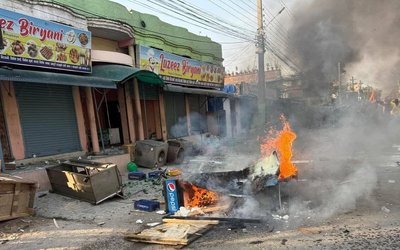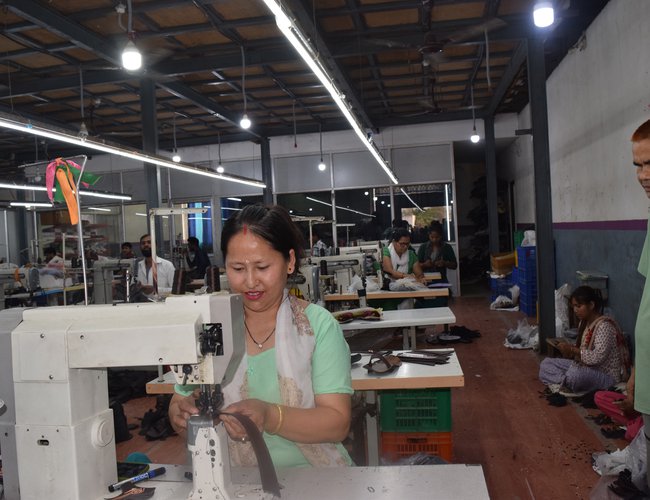
Pushpa Thapa Magar, a 35-year-old individual residing in Hattimuda in Budhiganga Rural Municipality Ward no 5 of Morang district, has benefited from this initiative by securing a job at Shivam Footwear Pvt Ltd as a skilled worker. As the spouse of a migrant worker, Pushpa received training at a factory before being employed by the footwear company.
With her new skills, she now earns around Rs. 25,000.00 (US$ 150) per month, working nine hours daily. Specializing in swing, cutting, and soles of footwear, Pushpa stated, "Relying on remittances to support my family and cover household expenses, including school fees, the job and income have made me self-sufficient." The collaboration between the Nepal Government, IFAD, and the private sector is vital to the project's success.
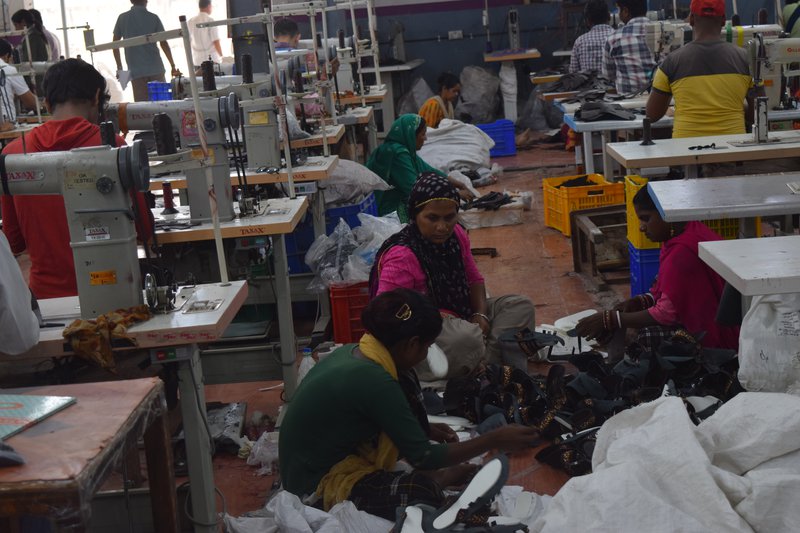
With strong support from FNCCI, Nepal's largest private sector association, the project has thrived. Over the last five years, many individuals like Pushpa have found job opportunities post internships. In a time where youth face unemployment challenges and businesses lack skilled labor, the Rural Enterprises and Remittances Project (RERP) Samriddhi's Leading to Apprenticeship Program Model 2 has offered a solution.
Nepal, the country with the highest rate of youth unemployment, is currently facing challenges in its industries sector due to a severe shortage of skilled labor. The Samriddhi Project has implemented the Leading to Apprenticeship Program Model 2, which has proven to be a mutually beneficial solution for both industries and unemployed youth.
In collaboration with The Federation of Nepalese Chamber of Commerce and Industry (FNCCI), the largest private sector organization, Samriddhi has successfully launched this program to tackle the shortage of skilled manpower in various industries that employ young individuals.
The decentralization of FNCCI to the provincial level, with FNCCI's Koshi province overseeing program implementation, has allowed for the introduction of the cutting-edge Apprenticeship Training Model in partnership with SAMRIDDHI. This initiative has significantly boosted Pushpa's monthly income in the more secure formal sector, compared to her previous earnings as an unskilled worker in the informal sector.
The local industries in the region have greatly benefited from the customized 900-hour apprenticeship training program. This program has provided trainees with valuable hands-on experience and practical training, enabling them to enhance their skills in a real work environment. The main objective of the program is to equip trainees with the necessary expertise to excel in their chosen fields. The president of FNCCI Koshi Province expressed his satisfaction with the new Leading to Apprenticeship program Model, as it effectively addresses the shortage of skilled labor in the region.
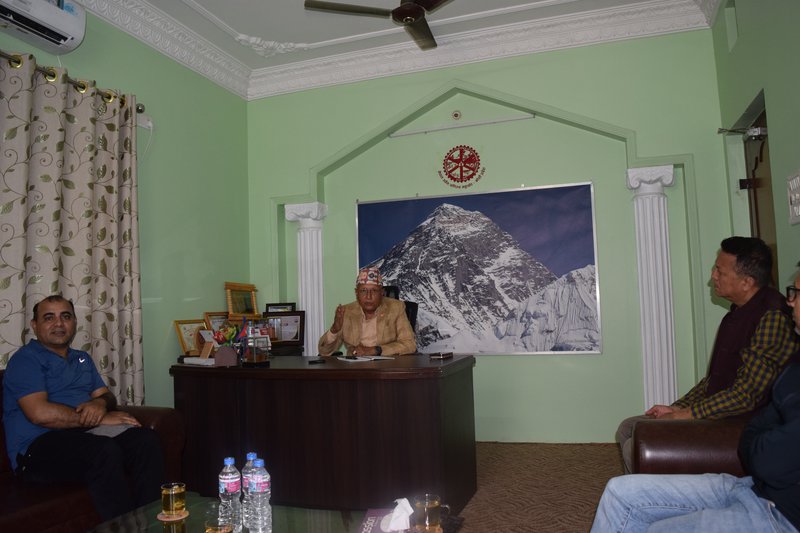
FNCCI Koshi Province will independently launch the program, with the support of Helvetas-Nepal and CTEVT recognized instruction. The president also mentioned that numerous industries have shown keen interest in participating in the program, which initially aimed to train 1,040 individuals in collaboration with SAMRIDDHI.
However, due to the pandemic, the training was initiated in the latter part of 2020. Despite the challenges, the training proved to be successful, with 86% of participants now employed in member industries that collaborated with the program. These individuals are earning an average monthly income of NPR 16,700.
Helvetas-Nepal has demonstrated its strong institutional capacity through various programs, including apprenticeship opportunities offered under different projects. The organization effectively utilized its expertise during the implementation of the Samriddhi Project.
Pratik Raut, the Managing Director of Shivam Footwear
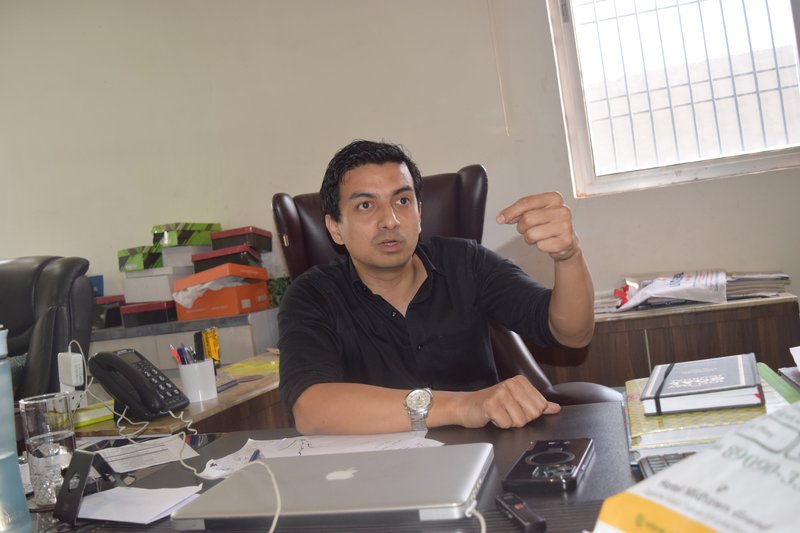
Pvt. Ltd, has emphasized the necessity of skilled human resources as the company expands its footwear production using new machinery. He has highlighted the significance of training programs in addressing the shortage of skilled labor within the industry.

Saroj Prasad Guragain, Joint Secretary at MoICS and the Project Manager, has stated that despite having a large youth population in the country, Nepalese industries are still struggling with a lack of skilled workers. This has resulted in the need for recruitment from other sources at higher costs. He has emphasized the importance of the Leading to Apprenticeship Program Model 2 in providing skilled human resources to the industry and creating job opportunities for the unemployed.
According to the findings of the labor force survey, approximately 500,000 individuals enter Nepal's labor market each year, with over 95 percent of them lacking training and skills. The survey also reveals that skilled laborers earn three times more than unskilled workers.
Sanjeev Kumar Shrestha, an expert in Value Chain & Markets and a National Consultant at the International Fund for Agricultural Development (IFAD), has described this project as a new model supported by IFAD, aiming to provide skills and employment opportunities.
Shrestha mentioned that the placement rate of trainees exceeds 80% due to the collaboration between FNCCI and industries. He described this as a successful partnership model between the Samriddhi Project and FNCCI, a leading private sector organization. In the current scenario where many Nepalese are seeking employment opportunities abroad, having skilled workers in Nepal can help boost incomes both locally and internationally.
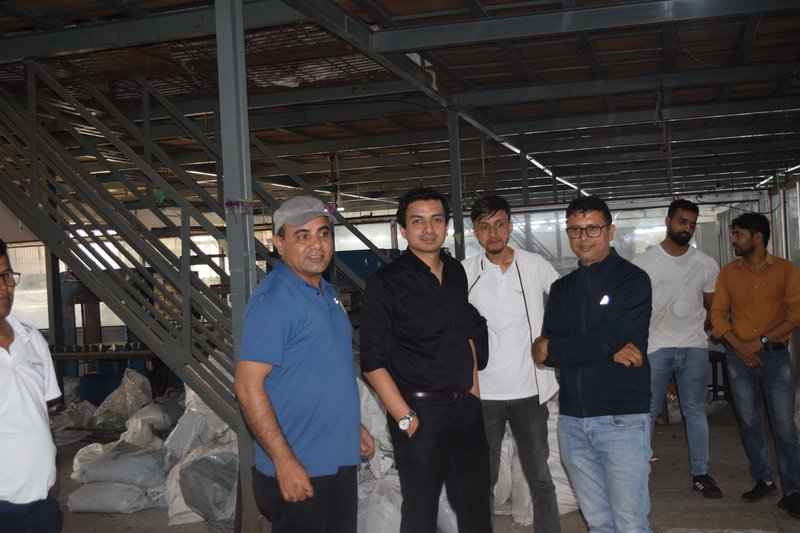
Given the current trend of many Nepalese seeking employment opportunities abroad, the presence of skilled workers in Nepal has the potential to enhance incomes both domestically and internationally. Dr. Prabin Manandhar, the country director of Helvetas Nepal, has emphasized the organization's efforts to provide relevant training to unskilled youth. Through the Samridhhi project's Decent Work component, Helvetas Nepal offers skill training, including the innovative Leading to Apprenticeship Program Model, to create job opportunities within the country.
Apprenticeship training is specifically designed to meet the demands of the labor market while promoting self-esteem, employability, and vocational career advancement for individuals. In this regard, apprenticeship programs are widely recognized as an effective approach to developing the labor force and reducing youth unemployment.
Rajendra Raut, the president of FNCCI Koshi Province, has acknowledged the challenges faced, such as outdated curricula and the absence of skills tests provided by the NSTB. However, he has emphasized that the shortened apprenticeship model has proven highly suitable for meeting the labor demand of member industries within a short timeframe. He has expressed optimism about implementing similar projects more effectively in the future.
During its initial stages, the short apprenticeship training program encountered challenges in gaining recognition from industrialists. However, the Samriddhi Project has successfully demonstrated that short-term programs are more efficient and effective for both industrialists and unemployed individuals. Sandip Poudel, the Team Leader of Helvetas Nepal's decent job category of Samriddhi Project, emphasized the advantages of this model, which guarantees employment for unemployed youths and supplies the necessary human resources for member industries.
Poshraj Niraula, the program officer of Helvetas-Nepal's Team in the Samriddhi Project, affirmed that industrialists find this approach valuable in addressing the demand for skilled workers in factories.
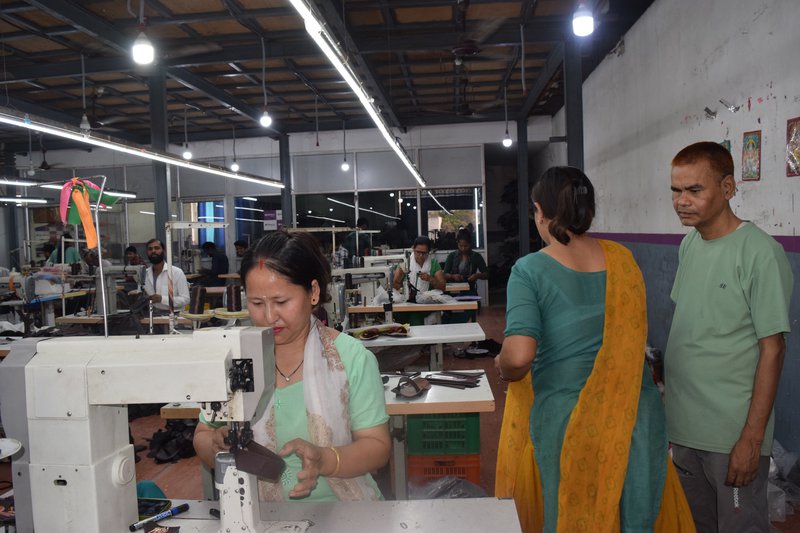
In collaboration with the Federation of Nepalese Chamber of Commerce and Industries (FNCCI) of Koshi Province, a total of 566 individuals, comprising 212 men and 354 women, have been trained in 7 different occupations until the year 2023.
The project is a joint initiative between the Nepal Government and IFAD, implemented across 16 districts encompassing Koshi, Madhesh, and Bagmati Province. Its primary objective revolves around establishing viable Rural, Micro, Small, and Medium Enterprises (RMSEs) in both farming and off-farming sectors. Helvetas Nepal provides technical assistance to sub-component 1.3 Decent Jobs, which aims to achieve this through TVET, job placement, and apprenticeships.
The FNCCI Province has made a noteworthy decision to adopt the same approach for females independently, following the remarkable achievements of the Samriddhi Project. This development is a significant result of the project's success.

Keshab Poudel
Poudel is the editor of New Spotlight Magazine.
- KUL MAN GHISING: Bowing Down To The People
- Apr 13, 2025
- POLITICAL VIOLENCE: Culture of Impunity
- Apr 11, 2025
- PM OLI MEETS PM MODI: No Progress
- Apr 09, 2025
- PM OLI’S THAILAND VISIT: Flip Flop
- Apr 08, 2025
- FM Dr. Deuba’s India Visit: Mission Aborted
- Mar 26, 2025





